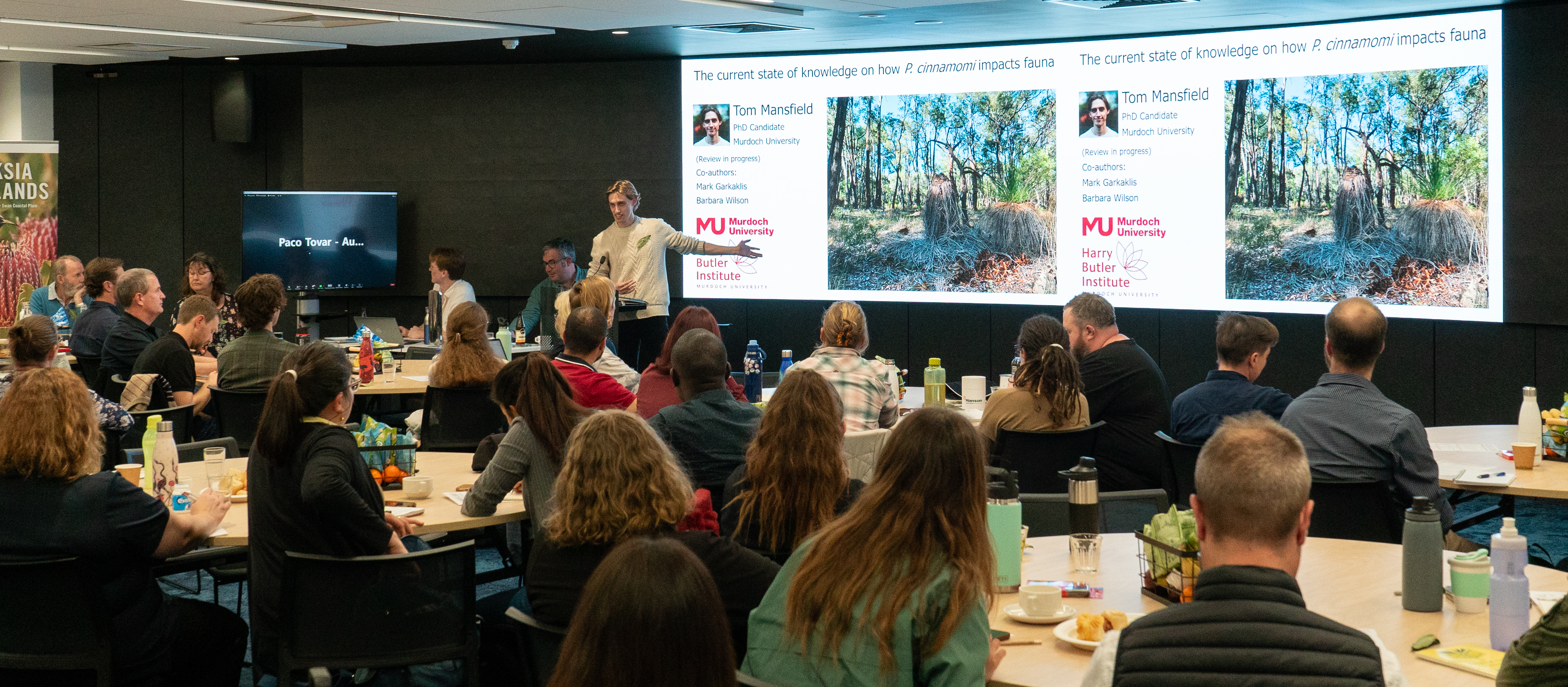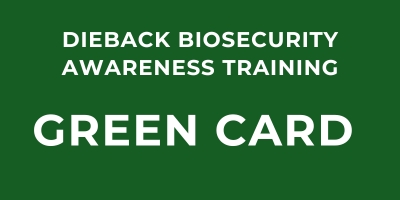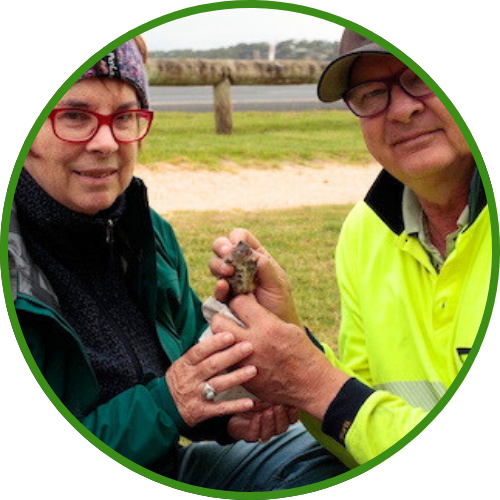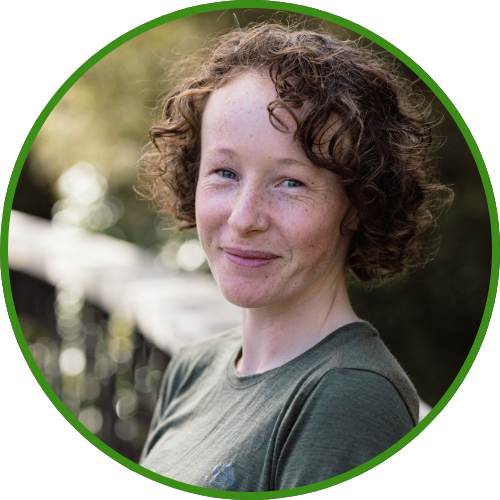
Dieback Information Group (DIG) Conference
This year's conference theme is “Seeing the Forest for the Trees” – selected to recognise the importance of holistic management for Australia’s forest ecosystems, and the pivotal role that environmental biosecurity and disease hygiene play in the health of these landscapes.
Conference Day 1: Tuesday 20th Aug
Time: 8:30 am - 5:30 pm
Location: Day One Venue - Murdoch University
Boola Katijin Building
90 South Street, Perth WA
Join us in-person or online to hear from a range of speakers from universities, government and non-government agencies, consultants, extractive industries, forestry organisations and land care groups who will deliver a range of presentations to showcase a diverse range of Phytophthora Dieback science and management talks, as well as content on other disease threats to natural ecosystems under the theme “Seeing the Forest for the Trees”. Tickets include morning tea, lunch and sundowner.
STANDARD PRICING:
Conference Day: $290 - SOLD OUT - WAITLIST ONLY
Conference Day Online: $95
Conference Day Student*: $210 - SOLD OUT - WAITLIST ONLY
Conference Day Student Online*: $35
*Students - you must register using your student email address to be eligible for the student discount.
WAITLIST: Please provide your contact info if more seating becomes available

Field Trip (Optional) Day 2: Wednesday 21st Aug
DWG GREEN CARD TRAINING

Location: Mt Lawley Golf Club (Founders Room), Perth
Time: 8.30 am - 2.30 pm
Trainer: Bruno Rikli, BSc Env mgt, DBCA Registered Dieback Interpreter, 30 years experience.
Green Card™ Training includes a presentation, assessment and a walk in bushland to look at Dieback Management.
DWG Green Card participants who complete the course receive the skills and knowledge to be able to understand the nature of the plant disease Phytophthora Dieback, how it can be managed and what steps they can apply to prevent its spread during all field activities.
The Green Card session includes an additional field trip with one of our expert trainers. We will walk to the nearby Inglewood Triangle Reserve to observe Dieback Management undertaken by the City of Stirling and implemented by the Friends of the Inglewood Triangle group.
Considered essential for anyone managing, working in, or entering bushland or vulnerable areas. This training is the “New” industry standard. Developed with input from the Department of Parks and Wildlife (WA) and only delivered by specialist trainers, you will learn the necessary skills and knowledge to mitigate a range of bushland threats and protect biodiversity using ‘Phytophthora Dieback’ as a widespread example in our South West Region of WA.
Find out more about Green Card Training here
TICKETS - 10% Discount for DIG
Standard: $277.20 (Inc GST)
Student/Community Group rate: $168.30 (Inc GST)
Conference Day Speakers
|
Geoff Pegg & Aj PerkinsCultural Wisdom Protecting Forests and Country - Partnerships to protect Country from forest biosecurity threats. Exotic pests and pathogens threaten cultural and environmental values unique to Australia. The recent detection and subsequent spread of the invasive myrtle rust pathogen, Austropuccinia psidii, has highlighted the challenges associated with managing these exotic pests and pathogens. The detection of significant dieback in the ecologically and culturally significant bunya pines, grass trees, etc. associated with introduced Phytophthora species causing root disease is another emerging area of significant concern. These issues have exposed our limited understanding of the impacts on Country, culture and community and how Indigenous sciences and knowledge systems and cultural custodianship practices are largely missing in the environmental biosecurity space. Country is the centre of Culture for Indigenous people, which is ingrained through connection, story, knowledge, kinship, totemic systems, language, and Lore. Building capacity in the forest health and biosecurity space requires technical experts and policy makers to walk together with First Nations people and develop an understanding of Culture and cultural custodianship practices to enable the appropriate implementation of strategies and tools. This project is about establishing an Environmental Biosecurity program and support network to improve the ability and capacity of Indigenous Rangers and other land managers across Australia to prepare for, detect and respond to plant pests and diseases threatening Australia’s forests. |
|
|
Melanie DaviesUrban Forest Program Facilitator, WA Local Government Association Creating Resilient Urban Forests
We are at a critical junction for urban forests, with ongoing loss of canopy. Trees are vital to mitigate the impacts of climate change in urban areas, providing multiple environmental, social and economic benefits. WALGA has been leading advocacy work for over ten years to support Local Governments to retain and grow their urban forest. This presentation will outline the policy and on-ground greening programs to support Local Governments to create resilient, connected, expanded and equitable urban forests.
|
 |
Tom MansfieldMurdoch University Long-term ecosystem decline under Phytophthora cinnamomi.
This talk highlights research on long-term impacts of Phytophthora cinnamomi to keystone forest trees. Historically, P. cinnamomi killed many jarrah, but not marri, in high rainfall periods; however, dryer conditions have lessened jarrah deaths. We studied tree population demographics in >60-year-old P. cinnamomi infestations. Our findings suggest that jarrah and, unexpectedly, marri are experiencing failed seedling recruitment within infested forests. The suggested decline of keystone trees has implications for long-term resilience of infested ecosystems.
Anna HopkinsEdith Cowan University A return to tertiary plant Pathology teaching There are few university-level courses that include a focus on plant pathology, despite a clear need for highly trained plant pathologists in industry. This presentation outlines two new plant pathology units that have been developed at Edith Cowan University. The units provide an overview of plant pathology principles and practices applicable in forestry, horticulture and agriculture. The presentation will also discuss the ways industry can contribute to these units.
Nigel RoweSenior Environment Officer - Main Roads WA Dieback Free Gravel Research and studies into using Metham Sodium to eliminate Phytophthora from gravel have been undertaken for almost two decades. Recently this work has ramped up to a commercial scale treating large quantities of gravel for use in road projects. This presentation summarises Main Roads’ approach to treating gravel with Metham Sodium and the management requirements of using this dieback free material on road projects.
Shannon HunterPhD Student, University of Auckland, Aotearoa - New Zealand Phytophthora Communities Associated with Agathis australis (kauri) New Zealand and the Impact of Phosphite Treatments on Species Assemblages and Inoculum Abundance This presentation will summarise two research papers from Shannon Hunters PhD project, one of which has been recently published and the other has been submitted to a journal. The Phytophthora community around kauri was explored using metabarcoding of environmental DNA (eDNA) and soil baiting in the context of kauri dieback disease expression and in response to a field phosphite-treatment.
|

|
Barbara Wilson and Mark GarkaklisA Roadmap for National (APVMA) Registration of Phosphite for the Management of Phytophthora cinnamomi in Native Vegetation.
The National Registration of phosphite to allow for the management of Phytophthora dieback in native vegetation will remove an administrative burden to the states and improve the uptake of this management tool throughout Australia. This presentation summarises the extent of the risks to Australia’s biodiversity from Phytophthora dieback, considers the barriers to use of phosphite in controlling the disease and presents a way forward for eventual national registration of phosphite.
Nicholas WilkinsPhD candidate, Environmental Health, Flinders University. South Australia A review of the current methods used to detect Phytophthora cinnamomi In this presentation, Nicholas will discuss a flow chart I created for management to assess the sampling and processing of potential or infected P. cinnamomi sites. Reliable and time-efficient assessment of new or spreading infestations is vital for conservation efforts and to limit dieback. With plant species knowledge combined with the most effective sampling and processing techniques, the connection of management to fieldwork then lab work can improve the understanding of P. cinnamomi.
Anna HopkinsSenior Lecturer – Edith Cowan University A return to tertiary plant Pathology teaching There are few university-level courses that include a focus on plant pathology, despite a clear need for highly trained plant pathologists in industry. This presentation outlines two new plant pathology units that have been developed at Edith Cowan University. The units provide an overview of plant pathology principles and practices applicable in forestry, horticulture and agriculture. The presentation will also discuss the ways industry can contribute to these units.
Kar-Chun TanAssociate Professor – Curtin University Dissecting the mode of action of phosphite in the dieback pathosystem The oomycete pathogen Phytophthora cinnamomi causes dieback of native Australian flora and horticultural crops such as avocadoes. Dieback is very difficult to control as there is little natural genetic resistance to the disease and the pathogen has evolved resistance to chemical control. Kar-Chun will talk about how modern mass spectrometry technology was used to unravel the genomics and biochemistry of P. cinnamomi including shedding light on the multi-modal function of the oomycetide phosphite in controlling dieback and manipulation of plant metabolism.
|
Sponsors
|
|
|
|
|
|
|
|
|
|
















